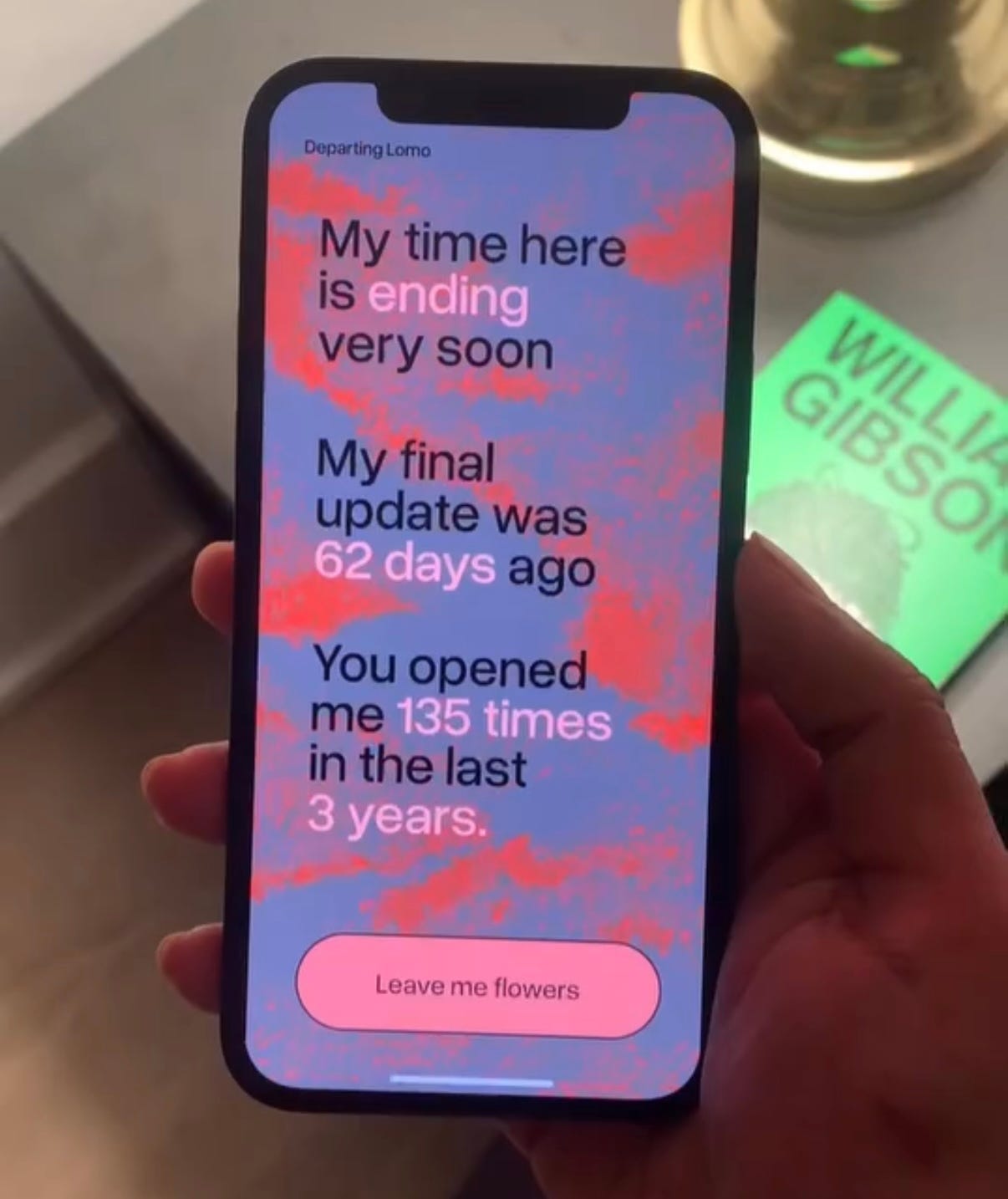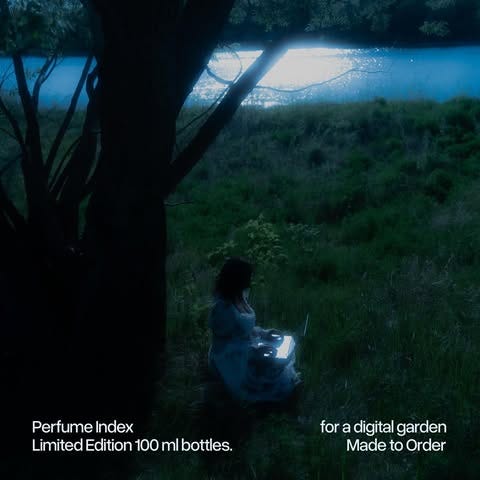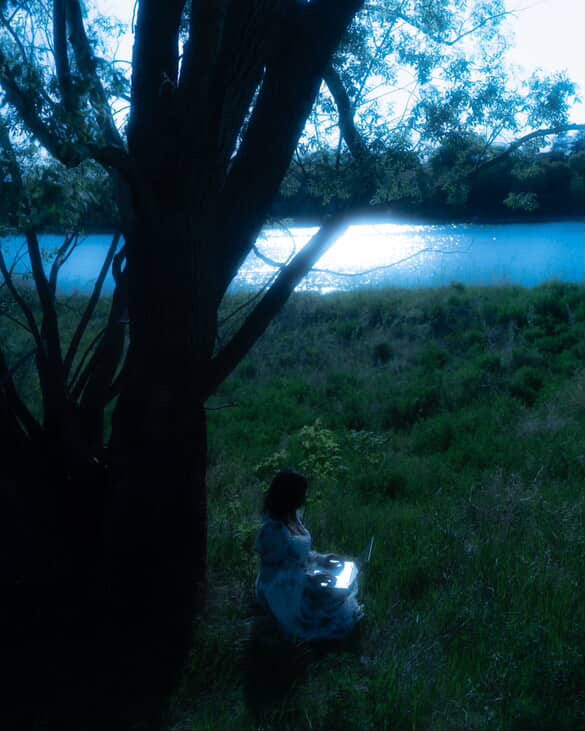Design as speculation, softness, and slow rebellion
A conversation with Akshara Dash about building Depth, an "intentionally inconvenient" design studio.
Today’s issue of PHONE TIME includes: a conversation with Akshara Dash about building the speculative design studio Depth.
Updated June 11

Depth, founded by Akshara Dash, is a new design studio that describes itself as “intentionally inconvenient.” The studio’s manifesto emphasizes systems thinking, slowness and care, depth over scale, and speculation over practices.
In a TEDx talk given at the University of Saskatchewan, Dash spoke about inclusive design.
“When you think of Apple, I want you to think of you. And when you think of Facebook, I want you to think of you,” she said during the talk. “Physical and digital products evolve and change, but what’s always there is you—is humans. Everything around you is made for you, but it’s also made by you.”
Depth’s Substack publication is called The Future Archive. This interview has been edited for clarity and length.
PHONE TIME: Hi Akshara! Tell me a bit about your background and how you came to start Depth.
AKSHARA DASH: My background is in computer science. But I also did an interdisciplinary degree, so it was also psychology, art, and art history together. I’ve been working in design for the last three or four years.
The reason I started Depth was that I was getting really tired of all the dominant narratives that we have in UX right now, which focus on functionality and efficiency. I’m thinking about a new framework through which we can approach design, and it’s more feeling-first. A lot of Indigenous or feminist frameworks use those types of systems thinking and feeling-forward design. I’m trying to incorporate that into, “What would that look like in a digital sense?”
PHONE TIME: Yeah, with a lot of design in the dominant tech scene, it’s clean and functional but kind of like, “For what?” How do you think about Depth in contrast to mainstream design, either in terms of aesthetic choices or other practices?
DASH: I think it started with me writing the manifesto. Before, I kind of took any opportunities if they seemed vaguely aligned with me, just because the job market is so bad right now. But then I feel like it hit a point where I was working at a tech startup and I was like, “I don’t want to go on this way.”
Digital design in general, it’s way more than a medium. I think what I’m trying to do with my studio is move beyond the narrative that coding and design are just tools. They hold a lot of power, and they have real consequences. Not just in the psychological way that people interact with them, but also the ecological and environmental impacts. So I’m trying to make that a bit more tangible through my work.
I’m also thinking about the concept of friction. A lot of tech or design culture is like, the more frictionless, the easier or the better it is. Removing all friction or making design invisible, is considered as almost the highest praise. But to me, I think incorporating intentional friction is what I want to do with my studio.
As for the visuals or aesthetics, I’m really inspired by the ocean. I love learning about biology and stuff like that. Something that really inspires me is just the resilience of creatures in the bottom of the ocean. It’s sort of crazy to me that in the deep sea, all of those creatures not only existing but creating environments.
I feel like these two things might seem so distinct, like digital design and deep sea. But I think it’s more so the values of it that I’m trying to incorporate: constant change and resilience. I’m deeply inspired by nature and just evolution in general.
PHONE TIME: I love the imagery that you use, and I can tell you really put craft into it. I wanted to ask a little about each of the projects you’ve done already. Tell me a bit about “Kind Space.”
DASH: Kind Space came out of the fact that I had hit a pretty low point in my life and I had been hearing about software in general in relation to soft personal spaces, early web and stuff like that.
I was like, “How about I just make something that doesn’t ask for anything in return and it’s just an offering to the world?” I felt like winter was just fading away and it was springtime, so I made it all pink and red and incorporated floral imagery. All I wanted for it to do was offer a space for people to linger or even have it be a conversation starter.
I’ve gotten critique on it from a user being like, “Oh, I’m getting messages that are generated by something off of the internet.” And I was like, that’s a very valid critique and I don’t think that that’s how I had intended it. It’s more of like a conversation starter, or even if you don’t want to send it to anybody, you can just sit there and read the messages. All of them are written by me. I’ve been super grateful with the type of feedback that it’s received.
PHONE TIME: Another project I was really interested in was “Perfume Index for a Digital Garden.”
DASH: That came out of the fact that I had been thinking about using a sense-based framework for designing things for the digital. In digital experiences, we’re often limited to our vision and then our hearing. Even with VR and stuff like that, I feel like don’t fully replicate the real world. But the sense of smell is just so powerful, and it’s almost like an easy time machine to take you anywhere.
I wanted to capture like, “What does surveillance smell like? What does loneliness smell like when you’re doomscrolling?” I wanted to capture those digital-based feelings into fragrance. I love being into perfumes and stuff like that. So all the recipes for the perfume, some of those ingredients are real, some of those are fictional. It was meant to be more like, evoking a sense of smell.
But in the future, I would absolutely love to have a perfume book where each page is describing something, and then you can take off a swatch and smell it. That would be a longer project, because I feel like it would take a lot of time, but I would love to do something like that.
PHONE TIME: I was also reading your piece about what it would mean for an app to die. Tell me a bit about that.
DASH: I was trying to explore, “What would it mean for an app to actually live and die?” Because I feel like in many ways, it does live and die. The back end, or the server and where it’s running, all of that stuff is sort of hidden. My reasoning behind making an interface like that is to honor what it means for an app to exist and disappear.

What would it look like for us to treat an app as an actual living thing? It sounds a bit absurd, but people have stuffies and stuff like that, where you give it a name and develop a real emotional attachment to it, even if it’s not actually living.
PHONE TIME: Looking at your Instagram, it also matches the level of craft and visual language of Depth. How do you think about putting your projects on social media? Do you think of it as like a necessary evil or are you excited about that part of it?
DASH: I feel like a dominant narrative for artists that people get frustrated with is like, “Oh, you gotta put your work out there and you gotta consistently post on social media.”
Instagram is just not a platform that aligns with my values and what Depth is trying to do. So if I had the opportunity to get off of it completely, I feel like I would do that. But right now, my studio is brand new, and I’m trying to build community.
I think that it’s okay if you don’t want to post on social media, but I think it’s important to build community. And that could be through smaller spaces on the internet. Another thing I really use a lot is Bluesky, and I met some really wonderful people on there.
PHONE TIME: I’ve loved getting to hear about how you think about design and especially incorporate a sensory element, like smell. What is your vision for Depth, both in the short term and in the future?
DASH: Short term, I’m really in this stage where I’m doing a lot of outreach. Not even in a transactional sense, more like community building. Through this, just in the last month, I’ve met some really cool and amazing people. Long term, I want to have my own sort of framework that I’m offering—on how to approach design differently—be one of the narratives people can look into.
I want it to inspire people to start their own frameworks about how we think about design. Because there’s many ways to do things, and oftentimes, the dominant narrative is so honed in that we just accept that as the reality. I want my work to always inspire people that there are alternate ways of doing things.





